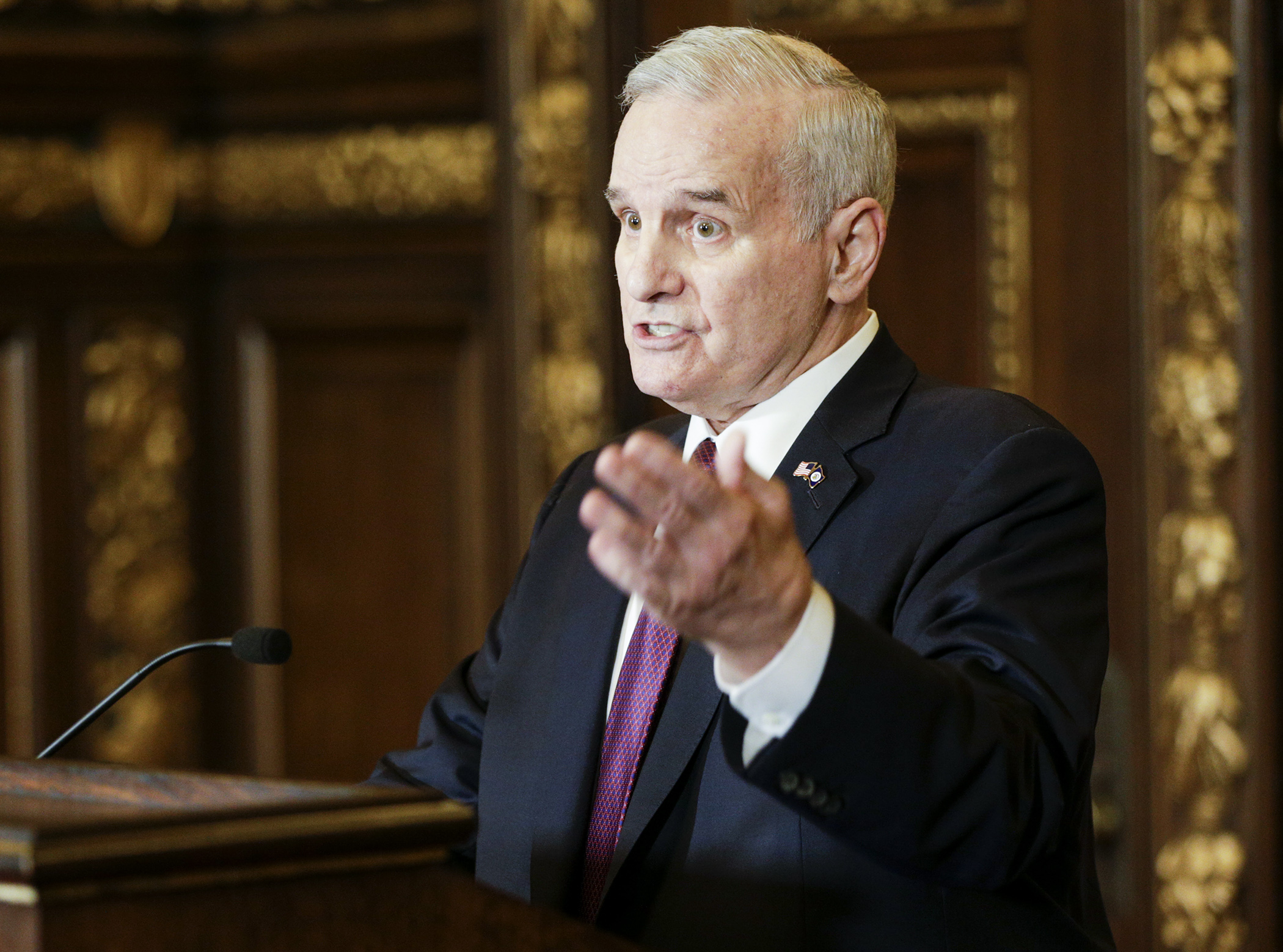Dayton will allow reinsurance bill to become law

A two-year, $542 million proposal to subsidize insurance companies with high-risk customers will become law after Gov. Mark Dayton announced Monday he wouldn’t sign nor veto it.
HF5*/SF720, sponsored by Rep. Greg Davids (R-Preston) and Sen. Gary Dahms (R-Redwood Falls), crossed Dayton’s desk after both chambers passed the bill last week. Facing a three-day deadline to sign or veto the bill, the governor announced in a letter to legislative leaders that he wouldn’t do either, effectively allowing the bill to become law. Most of the law will take effect Tuesday.
Citing a number of concerns over the plan’s funding methodology, no MinnesotaCare buy-in and a lack of public commitment from insurance companies, Dayton said that although the bill is far from ideal, something has to be done to heal the surging individual premiums.
“However, I agree with you, this bill's authors, and those legislative leaders, who believe that this subsidy must be committed to the health insurance industry at this time, to try to induce their participation in Minnesota's Individual Market in 2018 at the lowest possible rates,” Dayton wrote. “Thus I will allow this measure to become law by not acting upon it within the requisite three days, which end at midnight tonight.”
The law will require the Department of Commerce to seek a “State Innovation Waiver” from the federal government – a request under the Affordable Care Act that “innovates” how states can insure more residents. If the Trump administration agrees, Minnesota could see federal health care money help its reinsurance plan.
But if the federal government doesn’t give the state’s reinsurance bill the green light, the law will become void.
Under the bill, once an insurance company hits $50,000 in claims, it would be eligible for an 80 percent subsidy up to $250,000. Because an estimated 2.2 percent of Minnesotans on the individual market comprise 40 percent of its medical costs, insurance companies covering those costs raise premiums on everyone else. Proponents see the reinsurance program as an incentive for insurance companies to reduce premiums.
The bill passed the House 74-57 and the Senate 35-32.
Related Articles
Search Session Daily
Advanced Search OptionsPriority Dailies
Speaker Emerita Melissa Hortman, husband killed in attack
By HPIS Staff House Speaker Emerita Melissa Hortman (DFL-Brooklyn Park) and her husband, Mark, were fatally shot in their home early Saturday morning.
Gov. Tim Walz announced the news dur...
House Speaker Emerita Melissa Hortman (DFL-Brooklyn Park) and her husband, Mark, were fatally shot in their home early Saturday morning.
Gov. Tim Walz announced the news dur...
Lawmakers deliver budget bills to governor's desk in one-day special session
By Mike Cook About that talk of needing all 21 hours left in a legislative day to complete a special session?
House members were more than up to the challenge Monday. Beginning at 10 a.m...
About that talk of needing all 21 hours left in a legislative day to complete a special session?
House members were more than up to the challenge Monday. Beginning at 10 a.m...